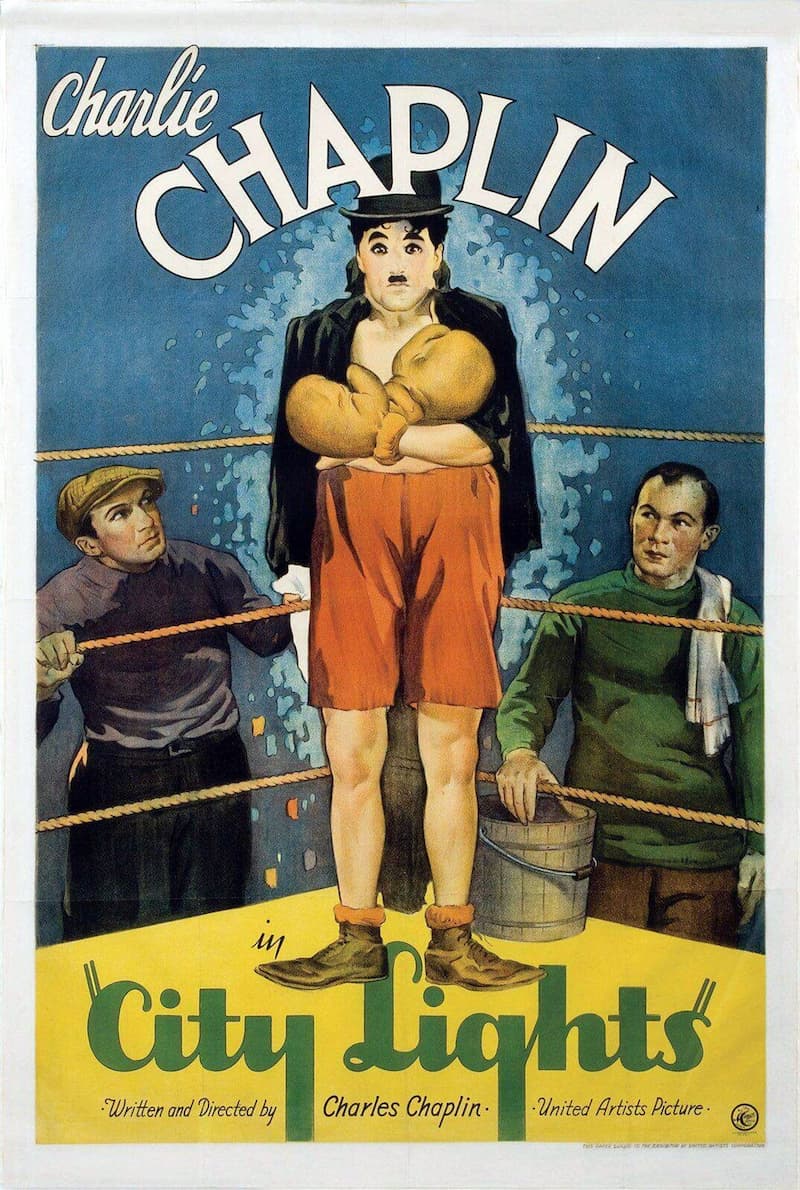City Lights (1931)

By 1931, silent movies were already out of fashion. The discovery that sound could be added to film in the late 1920s meant that moving pictures (movies) became talking pictures (talkies). For Charlie Chaplin, this was something of a problem. His most famous creation, the Tramp, flourished in the silent era. How would he cope in a world of people chattering away? Well, he continued as he was. And in doing so, ended up in one of the most successful films of the year. Yes, the Tramp wasn't going down without a fight. And City Lights features one of the best fights ever committed to celluloid
City Lights describes itself as a "comedy romance" - a com-rom, if you will - and yes, that's a pretty good description, as it's hilarious and heartwarming in equal measure. The Tramp meets a blind flower girl who mistakes him for a wealthy gentleman. He also befriends a millionaire who only recognises him when drunk. The Tramp is devoted to helping the flower girl, to the point of wanting to raise the money to pay for treatment to restore her eyesight. He attempts to secures funds by finding work, partaking in a boxing match and, ultimately through his on-again, off-again friendship with the millionaire.
Now, if I were a person who likes to analyse meanings and metaphors in films, I would probably say something about how both the flower girl and millionaire see the true character of the Tramp via their impairments. But their views of him are both kind of mistaken. The flower girl believes him to be a wealthy man, while the millionaire treats him as an equal only when drunk. But, maybe it's just not that deep.
Although the plot is strong, and the ending is perhaps one of the greatest of all time, it's the comic routines throughout which make the film. During their night on the town, Chaplin and the millionaire engage in some hilarious antics at a supper hall with a unnecessarily slippery dance floor. But it's the boxing match which stands out, with some seriously amazing comic timing of Chaplin, his opponent and the referee, to accomplish the scene.
The only part that didn't gel for me was, ironically, a scene that made use of sound as the main part of its joke. Technically this isn't a silent film. It had a soundtrack (some of which was composed by Chaplin himself), a bit of jokey unintelligble speech towards the beginning, and sound effects throughout. But, none of the characters speak - it relies on silent-era intertitles instead to introduce scenes and to convey dialogue. In the scene in question, the millionaire has a house party. The Tramp swallows a whistle, and each time he coughs or lets out a breath, there's a blast of the whistle. It's funny at first, but the scene overstays its welcome. I can imagine 1930s audiences ROFLing all over the cinema aisles at it though.
What makes this film work so well is how each element comes together almost perfectly. There's top-notch humour, lots of touching moments throughout, a great soundtrack, and the performances by Charlie Chaplin, Virginia Cherrill as the flower girl and Harry Myers as the millionaire are spot-on. This is a film about kindness and humanity, and watching this in April 2020, it was definitely needed at that time.